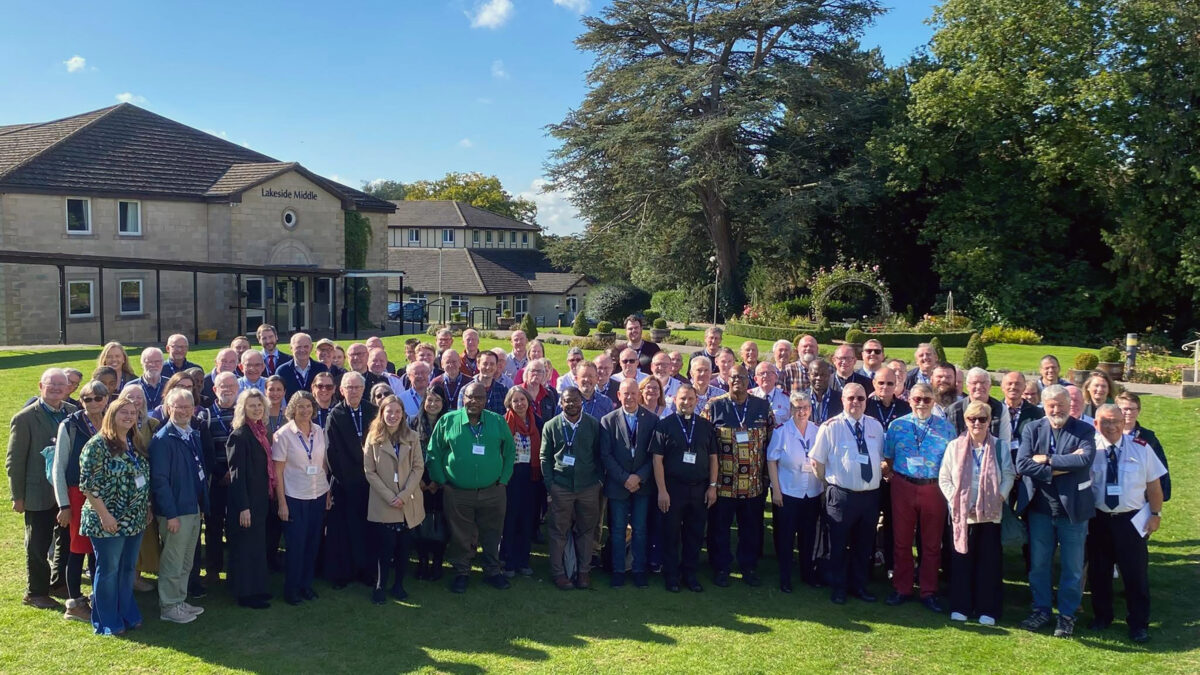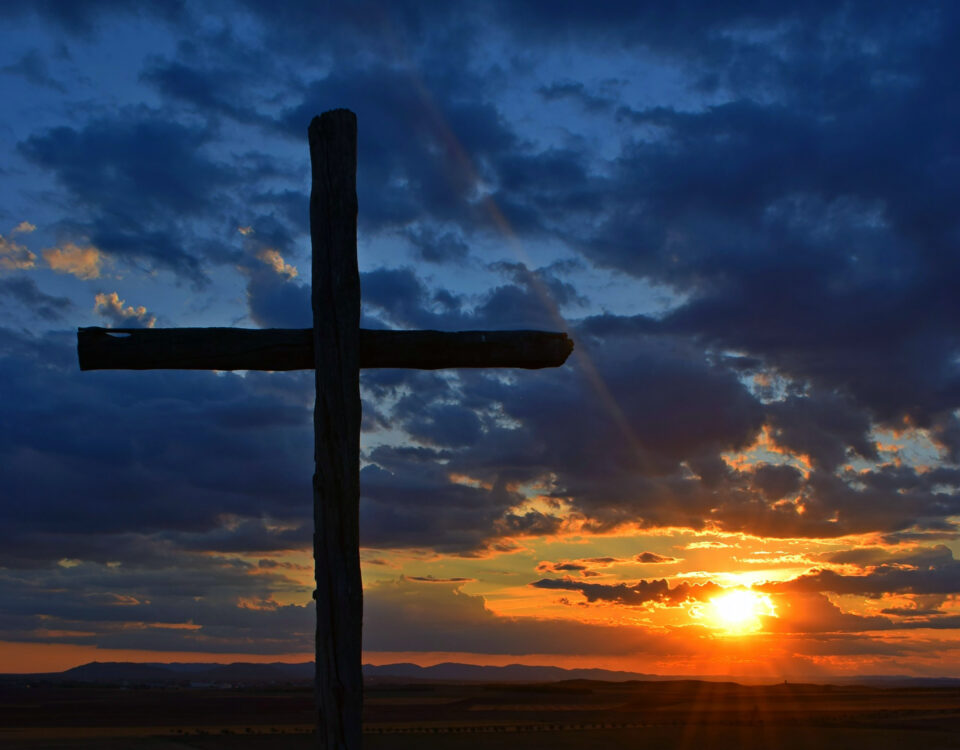
Family Conquers 38 Miles in Support of Persecuted
October 14, 2025Unity Corner is a regular feature on Christian Unity by Dr Ian Watson, County Ecumenical Officer for Norfolk and Waveney. Here he reports on what inspired him at this year’s Churches Together in England (CTE) All-Ecumenical Representative Conference.
The All-Ecumenical Representatives Conference 2025, held at the Hayes Conference Centre in Swanwick from 29 September to 1 October, gathered those working in local and regional ecumenism under the theme Ecumenism: Journeying Together. The programme wove worship, prayer, and reflection with sessions exploring pilgrimage, Orthodox church perspectives, human sexuality, interfaith dialogue, racial justice, and fresh approaches to ecumenical organising. Stories from across England and Wales showcased creative local initiatives, while opportunities for shared meals, prayer, and fellowship deepened connections.
What struck me most, and what I carried away from the conference, were not so much the explicit themes set out in the programme but two insights that arose in our conversations and reflections together. The first is that at the heart of Christian unity lies the idea of pilgrimage and journeying. The second is that God can be found in the ‘grey’ areas of our ecumenical life – those difficult and unresolved spaces where unity is not straightforward.
The image of pilgrimage is a profoundly Christian one. It is, for many of us, embedded in our spiritual imagination. As I set out in my last report about the Wells to Walsingham ecumenical pilgrimage, pilgrimage itself is never only about the destination. It is about the fellowship on the road, the prayers spoken along the way, the unexpected challenges, the learning and discovery, and the growth that comes through the very act of journeying together. At the conference, this understanding of pilgrimage emerged time and time again, not always explicitly, but through the way we spoke about our different Christian traditions and our shared hopes. It is in this sense that ecumenism is best seen as a form of pilgrim journey.
Many people talk about the ultimate goal of ecumenism being ‘visible unity’ – whatever that actually means in reality? I am not too sure how helpful this term now is. In my experience as County Ecumenical Officer I feel that a better goal is ‘reconciled diversity’ – which basically means we want to be one but not necessarily the same. For me, this is a much more realistic view. Reconciled diversity (something both Walter Kasper and the late dear Pope Francis championed) is about unity not uniformity. Here, the move towards Christian unity is not something with a clear finish line (uniformity), but an unfolding journey of togetherness towards Christ (unity) that calls for patience, humility, and trust.
We all know that typically pilgrims may come from different starting points but, eventually, their paths converge as they move toward a common horizon. This is true of our different Christian traditions. We may differ in worship styles, theological emphasis, or ecclesiastic structures, but we walk the same road of discipleship to follow Christ who calls us to walk together as one.
Pilgrims must always be willing to adapt the pace of the journey. They know there will be detours, delays, and days when the road is hard. So too in our ecumenical journey. Progress can be slow, sometimes frustratingly so, yet the very act of walking together, of praying side by side, sharing stories, and sharing one another’s burdens, is itself a witness to the unity Christ desires.
The second theme that emerged from the conference was, at least for me, perhaps more surprising – the realisation that God is often encountered in the ‘grey’ areas of our ecumenical life. These are the spaces where agreement is hard, where questions of theology, culture, or practice are messy and resist easy answers. This is not, of course, a new insight. The Christian mystical tradition has long spoken of encountering God in obscurity and uncertainty. The anonymous 14th-century author of The Cloud of Unknowing insisted: “By love He may be gotten and holden, but by thought never.” In other words, God is not fully grasped by clarity or certainty, but by love that abides even when the way is unclear.
St John of the Cross likewise described the ‘dark night of the soul’ as a privileged place of divine encounter. He wrote: “In the dark night of the spirit, God secretly teaches the soul and instructs it in the perfection of love,”. For John, the presence of messiness and the absence of clarity was not a sign of God’s distance but of His most intimate presence, hidden yet transformative. Indeed, more recently, Rowan Williams reminded me that the work of Christian unity will often be found in the ‘messy middle’ where answers are incomplete, and disagreements remain. This is in line with Pope Francis who frequently pointed us to the margins and to life’s ambiguities, saying God’s grace works not only in neat solutions but in the unfinished and uncertain places of our common life.
In light of these thoughts, the ‘grey’ areas of ecumenical work take on a different meaning. Rather than seeing them as obstacles to unity, we can view them as places of grace, namely, difficult but fertile ground where God invites us to deeper listening, humility, and trust. The focus here shifts us from viewing the other person wrong or refusing to cooperate, to collaboration and being present with them as a mystery animated by divine breath. It means listening from a place of quiet attention, holding the other in love, and being soft enough to carry another’s perspective without defensiveness.
In my role as County Ecumenical Officer, I encounter these grey areas constantly. They appear in conversations about ministry, liturgy, sacraments, and in questions of authority and governance, as well as in contemporary debates about human sexuality, the right to life, or social justice. Sometimes these are not easy conversations. If we are not careful, they can end with tension unresolved. Yet the more I reflect, the more I believe that God is present precisely there, in the wrestling, the patience required, and the compassion we must extend to one another.
‘Grey’ areas force us to acknowledge our limitations. They strip us of the illusion that we can engineer unity by clever arguments or careful plans. They remind us that true unity is God’s gift, not our achievement. In the very act of staying at the table together, of continuing to walk the journey even when we disagree, we provide witness to the faithfulness of Christ, who never abandons his Church.
When I place these two themes side by side, I see how they illuminate each other. Pilgrimage teaches us that unity is a journey, not a destination. The ‘grey’ reminds us that the journey is not along a straight and sunlit path, but it meanders through valleys of ambiguity and stretches of difficult terrain. I think here of the disciples on the road to Emmaus (Luke 24:13–35) who were confused and uncertain, unable to see the meaning of recent events. Yet it was precisely in their confusion (in the ‘grey’ of their grief and doubt) that the risen Christ drew near and walked with them. They did not recognise him at first, but in the breaking of bread their eyes were opened. I see that story as a parable of ecumenism: Christ walks with us even when we are uncertain, and often it is only after journeying together, that we glimpse his presence.
Ecumenism, then, is not about erasing ‘grey’ areas or rushing to the premature goal of ‘visible unity’. It is about walking patiently with others, trusting that the Spirit is at work even when progress seems slow. It is about daring to believe that God can be encountered not only in the light of agreement but in the shadows of difficulty. That is what struck me and what I take away from the conference – a renewed confidence that in travelling patiently and faithfully with others, even when the path is hard, we are already participating in the unity for which Christ prayed.
Note
At the conference I was delighted to meet Fr Marc Homsey, a priest of the Diocese of Leeds, who has been appointed as our new Catholic National Ecumenical Officer for England and Wales. Congratulations to Fr Marc! I hope you can join me in praying for him in this challenging national role. You can read more about his appointment by clicking HERE
Photo courtesy of Churches together in England




